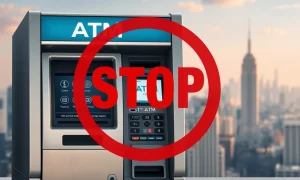In the fast-paced world of cryptocurrency, the lines between innovation and illicit activity often blur. Recently, the US government intensified its efforts against Garantex, a prominent cryptocurrency exchange, by redesignating it to its list of sanctioned entities. This move, however, highlights a persistent challenge: how do such entities continually evade enforcement? Blockchain intelligence firm TRM Labs suggests a troubling answer: sophisticated ‘contingency plans’ that allow Garantex and its associates to circumvent sanctions and continue operations.
Understanding the Persistent Challenge of Garantex
The US Treasury’s Office of Foreign Assets Control (OFAC) recently sanctioned Garantex for a second time. They also included its alleged successor, Grinex, in this latest action. However, experts from TRM Labs warn that these sanctions might prove ineffective. Their research indicates that entities like Garantex prepare contingency plans well in advance. This foresight enables them to quickly migrate clients, infrastructure, and funds to new successor platforms. Consequently, the impact of enforcement measures is significantly blunted.
Garantex has long served as a critical conduit for illicit financial flows. Ransomware gangs, darknet market transactions, and various other criminal activities have leveraged the exchange. OFAC estimates that Garantex processed at least $96 billion in crypto transactions between 2019 and March 2025. This staggering figure underscores the scale of the problem. Despite initial sanctions by OFAC in 2022, Garantex reportedly processed hundreds of millions of dollars more in illicit transactions. This continued activity highlights the exchange’s resilience and adaptive strategies.
Successors and Pre-Planned Migrations: The Grinex Case
Authorities in the US, Germany, and Finland collaborated to take down Garantex infrastructure in March 2025. Yet, this multinational effort did not halt the illicit activities. According to TRM Labs, Garantex’s leadership swiftly activated a contingency plan. This plan appears to have been in place for many months. Kyrgyz government records, for instance, show that Grinex was incorporated in December 2024. This incorporation occurred well before the seizure, indicating that Grinex was ready to take up the mantle as a successor platform.
Furthermore, wallets linked to Garantex began moving significant funds. These movements started in January 2025, weeks before the takedown. Funds shifted into A7A5, a Russian ruble-pegged stablecoin. This early movement strongly suggests foreknowledge of impending enforcement. It also underscores an intent to establish a sanctions-resistant value-transfer channel. This proactive measure demonstrates a sophisticated level of preparation for potential disruptions.
(Image depicting funds flowing from Garantex wallets to new, obscure channels before a takedown. Source: TRM Labs)
Following the disruption of Garantex, Telegram channels associated with the exchange quickly began promoting Grinex. They advertised it as a new platform with familiar functionality. This rapid transition ensured minimal interruption for users engaged in illicit activities. The seamless shift highlights the effectiveness of their pre-planned contingency operations.
Meer Exchange: Another Layer of Evasion
The network of evasion extends beyond Grinex. Another crypto exchange, known as Meer, has also emerged as a potential backup plan. Meer was among the first platforms to list the A7A5 stablecoin. Intriguingly, it shares similar features and trading interfaces with both Garantex and Grinex. This striking resemblance suggests a coordinated development effort among these platforms.
Meer’s site registration also occurred in December 2024. This timing aligns perfectly with the incorporation of Grinex and the introduction of A7A5. TRM Labs points to this synchronized timing as evidence of ‘coordinated development.’ Furthermore, Meer experienced a significant surge in trading volume following the March 2025 enforcement action on Garantex. This surge strongly suggests that Meer may have served as an additional channel for sustaining illicit financial flows. It could also be directly connected to Garantex’s operators, adding another layer of complexity to the enforcement challenge.
(Image illustrating potential connections between Meer exchange and Garantex operators, showing a web of interconnected entities. Source: TRM Labs)
A7A5: Central to Sanctions Evasion for Garantex
The A7A5 token played a pivotal role in the transition from Garantex to Grinex. This stablecoin helped facilitate the movement and recovery of frozen customer funds after the takedown. TRM Labs considers the Garantex–Grinex–A7A5 nexus a ‘critical case study.’ It provides invaluable insights into how illicit activity migrates across platforms. This case should prompt enhanced due diligence, especially concerning fiat-pegged tokens with non-transparent governance.
The firm further emphasizes how fiat-pegged tokens, often marketed as routine settlement instruments, can be repurposed. They become core components of sanctions-evasion strategies. This occurs particularly when linked to opaque corporate networks and sanctioned financial institutions. The A7A5 example perfectly illustrates this sophisticated method of circumventing financial regulations. It presents a significant challenge for global enforcement agencies.
Implications for Future Enforcement Against Garantex
The ongoing saga of Garantex and its successors underscores a critical need for evolving enforcement strategies. Traditional methods of sanctioning individual entities prove insufficient against agile, networked illicit operations. Authorities must develop more dynamic approaches. These should include proactive monitoring of new platform registrations and token launches. Understanding these ‘contingency plans’ is paramount.
The collaboration between blockchain intelligence firms like TRM Labs and government agencies becomes increasingly vital. Sharing insights into the operational tactics of sanctioned entities can lead to more effective interventions. Furthermore, international cooperation among regulatory bodies is essential. Illicit crypto operations often span multiple jurisdictions, making a unified response crucial. Without such coordinated efforts, entities like Garantex will continue to find new ways to operate, undermining global financial integrity.
The case of Garantex serves as a stark reminder of the persistent cat-and-mouse game between regulators and sophisticated illicit financial networks in the cryptocurrency space. As these networks adapt, so too must the strategies designed to counter them. Only through continuous vigilance, advanced intelligence, and robust international collaboration can authorities hope to mitigate the impact of such evasive operations.
Frequently Asked Questions (FAQs)
What is Garantex?
Garantex is a cryptocurrency exchange that has been repeatedly sanctioned by the US Treasury’s Office of Foreign Assets Control (OFAC) for allegedly facilitating illicit financial transactions, including those related to ransomware and darknet markets.
Why are the sanctions against Garantex considered ineffective?
According to TRM Labs, Garantex and similar entities prepare ‘contingency plans’ well in advance. These plans involve setting up successor platforms like Grinex and Meer, allowing them to quickly migrate clients, infrastructure, and funds, thus circumventing the impact of sanctions.
What role does the A7A5 stablecoin play in Garantex’s evasion tactics?
A7A5 is a Russian ruble-pegged stablecoin that became central to the transition from Garantex to Grinex. It helped facilitate the movement and recovery of frozen customer funds, acting as a sanctions-resistant value-transfer channel for illicit activities.
What is Grinex, and how is it connected to Garantex?
Grinex is identified as a successor platform to Garantex. It was incorporated months before the March 2025 takedown of Garantex’s infrastructure, suggesting it was part of a pre-planned contingency to continue operations under a new name with similar functionality.
How can authorities more effectively combat entities like Garantex?
More effective strategies include proactive monitoring of new platform registrations and token launches, enhanced due diligence on non-transparent fiat-pegged tokens, stronger collaboration between blockchain intelligence firms and government agencies, and increased international cooperation among regulatory bodies to address cross-jurisdictional illicit activities.
























